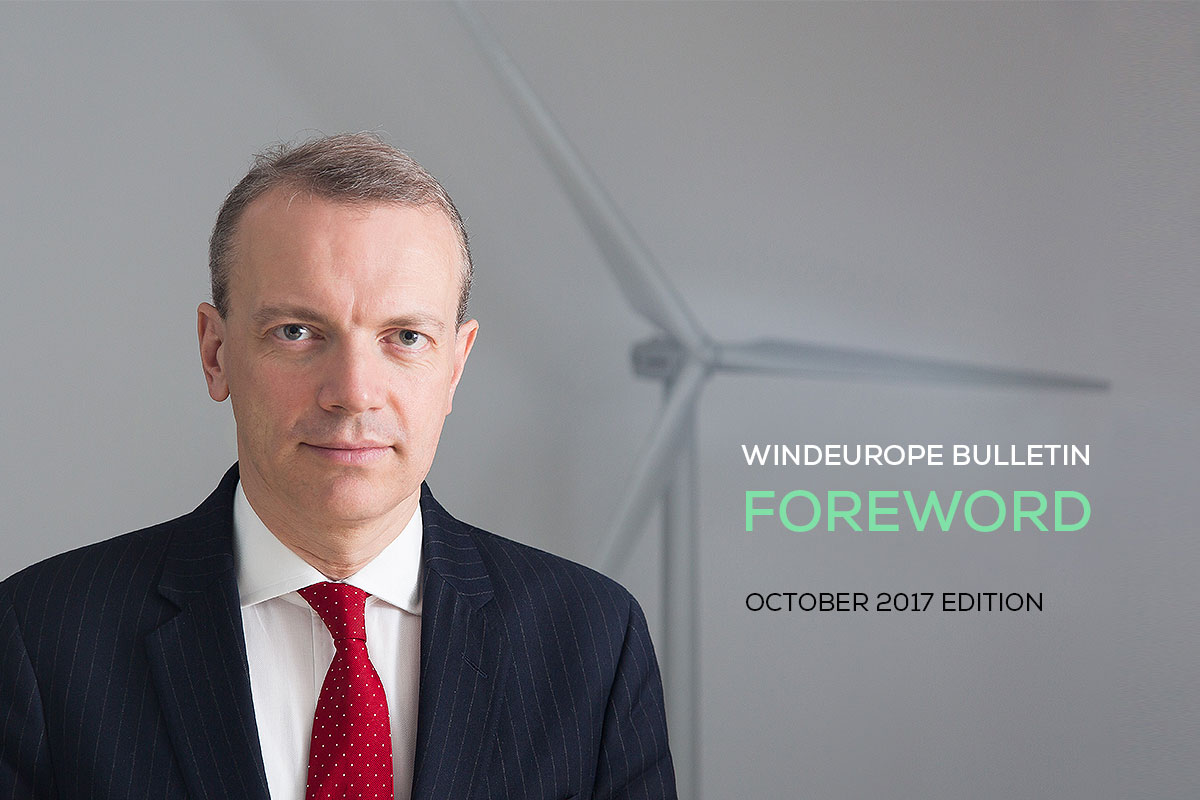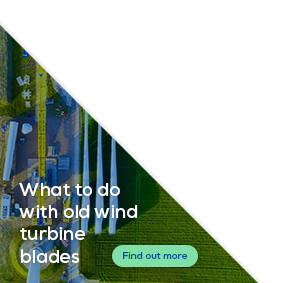News
WindEurope Bulletin October 2017 Foreword

3 October 2017
CEO Foreword
Dear WindEurope Member,
Welcome to our new leader! I’m sure you’ll wish to join me in extending a warm welcome to our new Chairman, Ivor Catto, Chief Executive Officer of RES (Renewable Energy Systems), who was elected at our September Board meeting. Please also welcome our new Vice-Chairman, Juan Rivier Abbad, Head of Regulation at Iberdrola. We’re delighted to have Ivor as our new Chairman. It will be a great asset to WindEurope to have at our helm one of the world’s largest independent renewable energy companies, with its expertise across wind, solar, power and storage.
You may also have seen that we recently released two major reports that examine the future of wind: our Outlook to 2020 and Scenarios to 2030. The headline message is that wind energy still has enormous potential but we’re going to need the right policies in place to transform the energy system to unlock this growth.
According to our projections, Europe could be on course for an average installation rate of 12.6 GW per year in the years up to 2020. This would take us to a total of 204 GW by 2020. By this date wind would be Europe’s largest renewable energy source, surpassing hydro and providing 16.5% of Europe’s electricity demand. However, this growth is likely to be concentrated in just six countries (Germany, the UK, France, Spain, the Netherlands and Belgium), with Central and Eastern Europe lagging well behind.
The Scenarios for 2030 report shows that wind could provide 30% of Europe’s power by 2030, reaching a total of 323 GW. This would also include the repowering or life-extension of the roughly half of the EU’s existing wind capacity that is going to reach the end of its operational life before 2030.
This level of growth would mean 382 million tonnes of avoided CO2 emissions annually. It would unlock €239bn in investment from 2017-2030, enable the wind industry to support 569,000 European jobs by 2030 and avoid the import of €13.2bn worth of fossil fuels per annum.
The new 2030 scenarios will be extremely challenging to meet. Reaching 323 GW will only be possible if the right policies are in place and significant changes to the energy system are made. This includes greater certainty on long-term revenue stability; significant progress on the system integration of variable renewables including build-out of the grid and interconnectors; and clear policy commitments on electrification. Whenever you present these scenarios, you need to make sure everyone understands major systemic changes are required to unlock wind energy’s potential.
Wind energy is now firmly established as the cheapest form of new power generation. But the outlook from 2020 is uncertain. We as an industry need binding and ambitious National Energy & Climate Action Plans that provide clarity on post-2020 volumes, which will allow cost reductions to continue. This requires a good outcome on the EU Clean Energy Package, which is one of our main priorities in the coming months. With an ambitious European renewables target of at least 35% by 2030, I’m confident that the wind industry can deliver even bigger volumes at competitive cost.
Finally can I highlight our two big events coming up:
- On 10-11 October in Brussels we’ll be holding our event on corporate renewable PPAs (Power Purchase Agreements) in Brussels. This will bring together the renewables industry with industrial and other corporate buyers of renewable power – as well as government policy-makers. We will discuss the next steps needed to rapidly increase the corporate procurement of renewable power; and
- Our annual Conference & Exhibition in Amsterdam (28-30 November). The conference programme is now online. There are 40+ sessions covering market and technology developments in both onshore and offshore wind, system integration, finance and government policy. There is still some space left in the exhibition if you haven’t booked your stand yet – and we’re offering a 50% discount for first-time exhibitors. And then there’ll be a range of side-events covering e.g. civil and military aviation issues, health and safety and improving data exchanges with weather forecasters. I look forward to seeing you all there.
– Giles Dickson
CEO, WindEurope
Want to read more and receive our regular newsletters?

